
Lucas van Leyden, also named either Lucas Hugensz or Lucas Jacobsz, was a Dutch painter and printmaker in engraving and woodcut. Lucas van Leyden was among the first Dutch exponents of genre painting and was a very accomplished engraver.

Jan Gossaert was a French-speaking painter from the Low Countries also known as Jan Mabuse or Jennyn van Hennegouwe (Hainaut), as he called himself when he matriculated in the Guild of Saint Luke, at Antwerp, in 1503. He was one of the first painters of Dutch and Flemish Renaissance painting to visit Italy and Rome, which he did in 1508–09, and a leader of the style known as Romanism, which brought elements of Italian Renaissance painting to the north, sometimes with a rather awkward effect. He achieved fame across at least northern Europe, and painted religious subjects, including large altarpieces, portraits and mythological subjects.
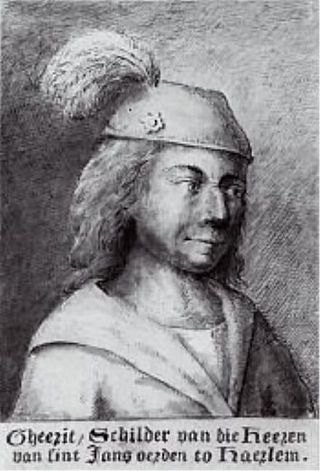
Geertgen tot Sint Jans, also known as Geertgen van Haarlem, Gerrit van Haarlem, Gerrit Gerritsz, Gheertgen, Geerrit, Gheerrit, or any other diminutive form of Gerald, was an Early Netherlandish painter from the northern Low Countries in the Holy Roman Empire. No contemporary documentation of his life has been traced, and the earliest published account of his life and work is from 1604, in Karel van Mander's Schilder-boeck.

Jan Mostaert was a Dutch Renaissance painter who is known mainly for his religious subjects and portraits. One of his most famous creations was the Landscape with an Episode from the Conquest of America.
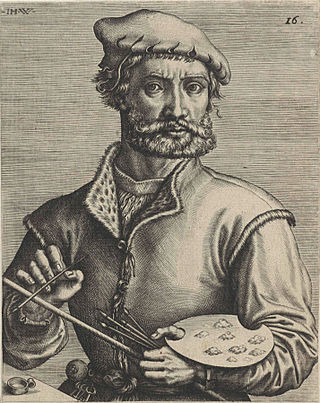
Pieter Coecke van Aelst or Pieter Coecke van Aelst the Elder was a Flemish painter, sculptor, architect, author and designer of woodcuts, goldsmith's work, stained glass and tapestries. His principal subjects were Christian religious themes. He hailed from the Duchy of Brabant, worked in Antwerp and Brussels, and was appointed court painter to Charles V, Holy Roman Emperor.

Albert van Ouwater was one of the earliest artists of Early Netherlandish painting working in the Northern Netherlands, as opposed to Flanders in the South of the region.

Willem Adriaensz Key was a Flemish Renaissance painter.

Aernout or Aart Jansz Druyvesteyn was a Dutch Golden Age lawyer, painter, and mayor of Haarlem.

Pieter Pietersz the Elder, also Pieter Pietersz. (I), (1540–1603) was a Dutch Renaissance painter.
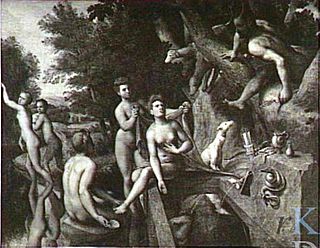
Joos de Beer was an Early Dutch painter from Utrecht.

Fransoys or Frans Menton (c.1550–1615) was a Dutch Golden Age portrait painter.
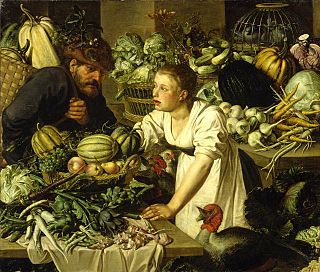
Pieter Cornelisz van Rijck, was a Dutch Golden Age painter.
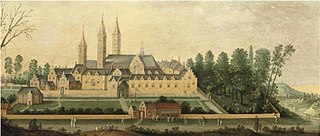
Claes Jacobsz van der Heck, was a Dutch Golden Age painter.

Lucas Cornelisz de Kock or Kunst (1495–1552) was a Dutch Renaissance painter active in the Tudor court.

Aert Pietersz (1550–1612) was a Dutch Golden Age painter.
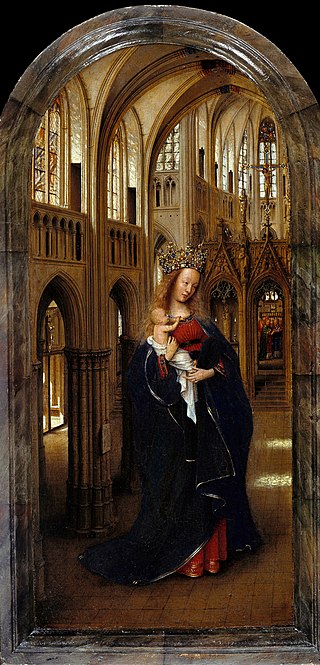
Madonna in the Church is a small oil panel by the early Netherlandish painter Jan van Eyck. Probably executed between c. 1438–1440, it depicts the Virgin Mary holding the Child Jesus in a Gothic cathedral. Mary is presented as Queen of Heaven wearing a jewel-studded crown, cradling a playful child Christ who gazes at her and grips the neckline of her red dress in a manner that recalls the 13th-century Byzantine tradition of the Eleusa icon. Tracery in the arch at the rear of the nave contains wooden carvings depicting episodes from Mary's life, while a faux bois sculpture in a niche shows her holding the child in a similar pose. Erwin Panofsky sees the painting composed as if the main figures in the panel are intended to be the sculptures come to life. In a doorway to the right, two angels sing psalms from a hymn book. Like other Byzantine depictions of the Madonna, van Eyck depicts a monumental Mary, unrealistically large compared to her surroundings. The panel contains closely observed beams of light flooding through the cathedral's windows. It illuminates the interior before culminating in two pools on the floor. The light has symbolic significance, alluding simultaneously to Mary's virginal purity and God's ethereal presence.
Reinier Boitet, was a Dutch publisher and writer who updated Dirk van Bleiswijk's History of Delft in 1729.

Lambert van Noort (1520–1571) was a Flemish Renaissance painter.

Herman van der Mast was a Dutch Renaissance painter from the Netherlands.

Saint Luke Painting the Virgin is an oil on canvas painting by the Dutch Golden Age artist Maarten van Heemskerck, from 1532. It is held in the Frans Hals Museum, in Haarlem.
























